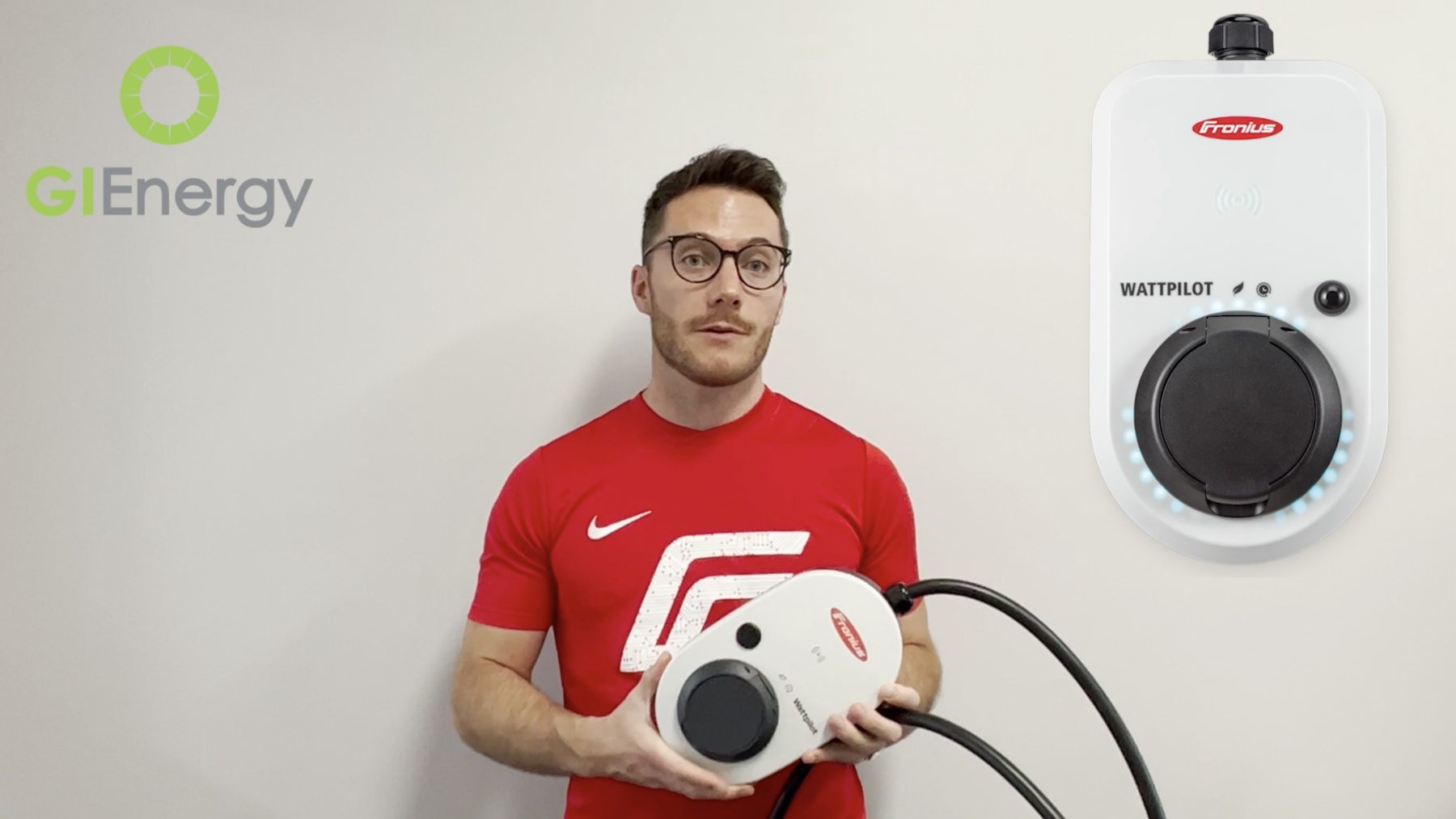Fronius Watt Pilot 11J and 22J EV Charger
Today we are talking about the Fronius Watt Pilot 11J and 22J EV charger. A lot of you may already have an electric vehicle (EV) with or without solar or will be considering an electric vehicle for your home. The Fronius Watt Pilot is a really great way of utilizing excess solar energy to work directly from the solar panels to charge your car.
The Fronius Watt Pilot comes in a 11 kilowatt and 22 kilowatt model. The 22 kilowatt model can be used if you have three phase power at home and the 11kW for single phase. Fronius have also released a portable one that you can take if you’re going on a long journey and need to charge your EV somewhere.

A lot of our clients want to understand exactly how this will work for their home. So, if we take quite a common electric vehicle like a Tesla Model Three, which a lot of people have, they may be charging that at the moment from a simple power point in the home on a really slow trickle charge through the day or overnight. To charge that car from empty all the way to full would take about 30 to 33 hours. If you use a Fronius Watt Pilot EV charger you can charge either 11kW or 22kW per hour. This means you can charge the same car fully charged in either approximately 7 or 3.5 hours respectively with the 11J and 22J version.
An intelligent EV charger
But what it will do better than anything else is utilize solar electricity straight from the solar panels into the charger. This is important as excess solar energy would usually get exported to the grid and you will be paid very little for it. The Fronius Watt Pilot allows you to use this energy for your EV, rather than exporting it, therefore saving you a lot more money.
Furthermore, if it’s a little bit overcast, it can actually ramp up and down. Just like if you’ve got other appliances in your home like a pool, hot water or aircon, you can just leave your car plugged in all day and just take that solar energy directly from the panels, rather than paying for it from the grid.
Instrumental to this happening is the Fronius Smart Meter. With a system of any size, you can install a Fronius Smart Meter to provide consumption monitoring which then provides full understanding of what your home’s energy use.
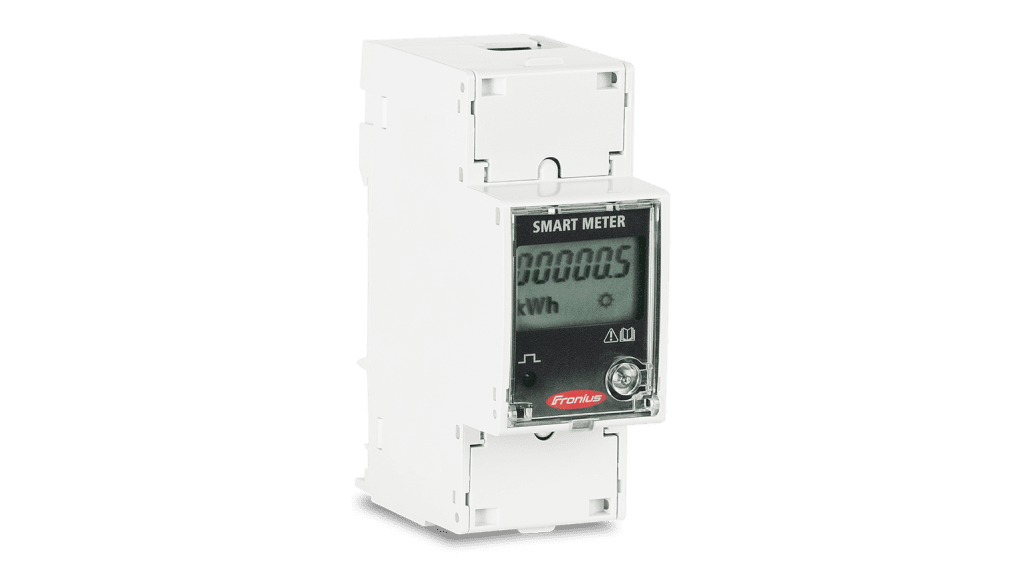
Image above shows a single phase Fronius Smart Meter.
In most areas in Australia, solar systems with single phase power are limited to 5kW maximum export. For example, if you had a 10kW inverter on a single phase home you would have to export limit to 5kW. So, the huge benefit here is the Fronius Watt Pilot and the inverter together with a smart meter, will actually allow you to remove that export limit to take excess when available to charge your car. Essentially, if your solar panels are capable of producing 10kW but your load in the house is only 1kW, the system will cap itself at 6kW so no more than 5kW can be exported. With this same example, if you had your Fronius Watt Pilot installed, your system would be able to produce the full 10kW it was capable of, and direct it to your EV.
With any other EV charging option on the market at the moment that we’re aware of, this will require a separate hardware. So not only does that take up more space in your switchboard, but obviously costs more money as well. It also means that there’s two separate things working at the same time when everything can just be done through one unit.
So, let’s have a look at a live system that has a Fronius Watt Pilot installed with solar and battery.

This particular client has a Fronius Snap primary inverter that was installed in 2016. Midway through 2022 the client came back to us for a Fronius Gen24 inverter with BYD storage and a Fronius Watt Pilot, as he was purchasing a new EV. The EV they purchased has got a 35 kilowatt hour battery built in. So on this particular day, at 6.45am, he plugged in his car (circled in the image below).

You can see from the image, the system will actually then take all the excess power from the solar that’s available, less whatever is being used in the home, and perfectly follow that production curve through the day, utilising solar energy instead of exporting it.
When we get to around 11:30 the car is fully charged, and you can see the spike has been reduced in terms of what’s being consumed on site. And now his battery begins to fill up really quickly.
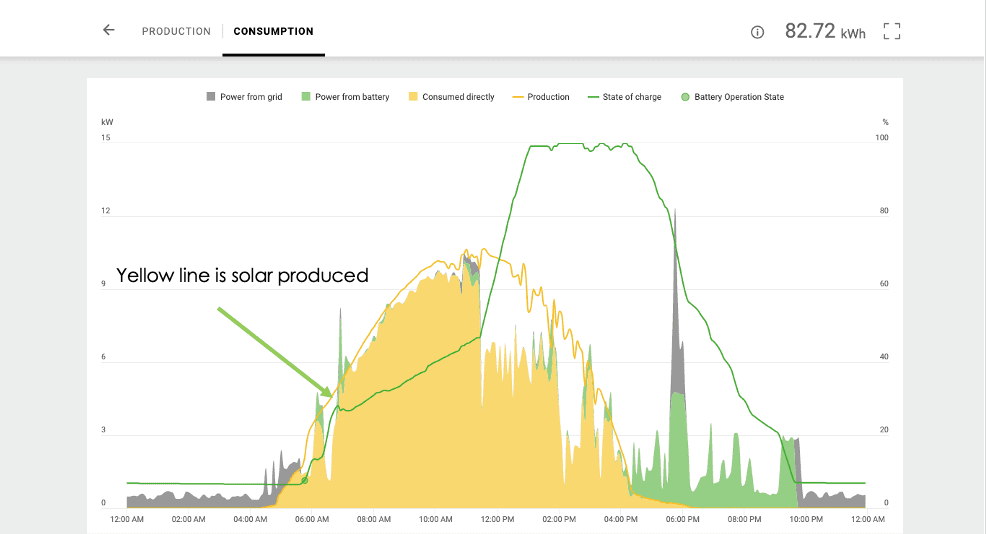
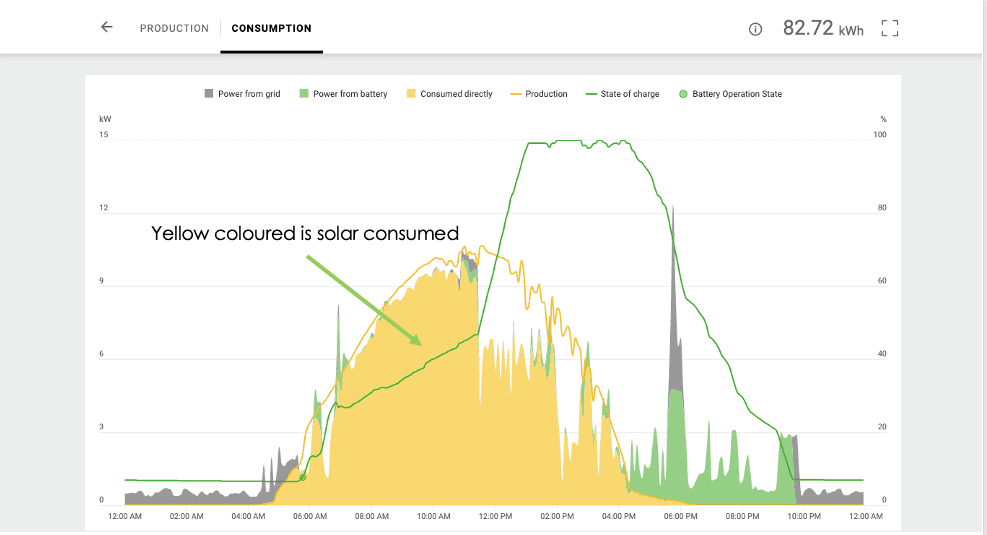
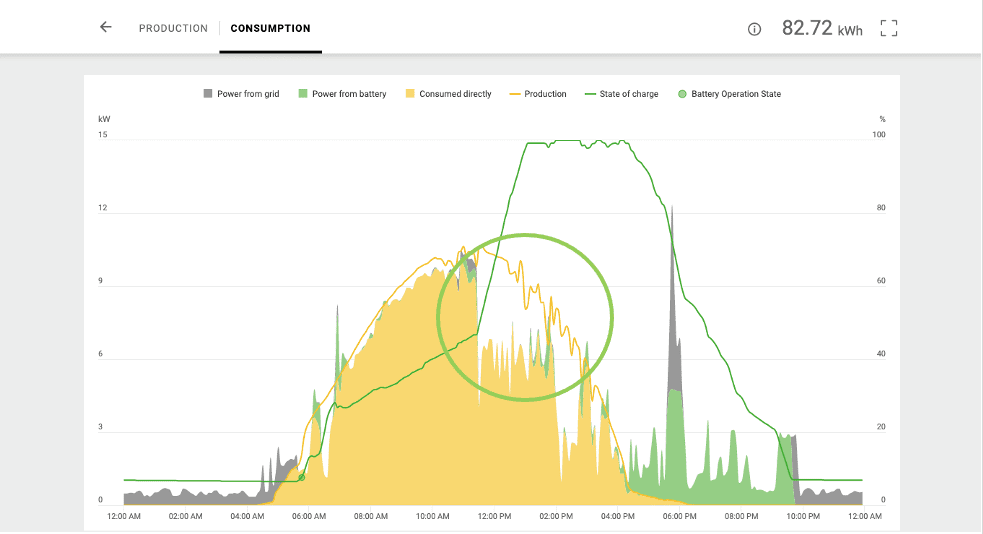
Image above shows the car was fully charged using excess solar energy by 11.30am, and then the solar started charging the battery.
Through the morning from 6am through till 11:30am, you can see the green line is the state of charge of the battery. So that’s increasing quite slowly, due to charging the car, and then any excess over and above that is going into the battery. Without the Fronius Watt Pilot, after the battery was charged, the solar energy not being used would be exported at a low rate where possible, or capped by export limits.
Through the afternoon, the battery fills up.
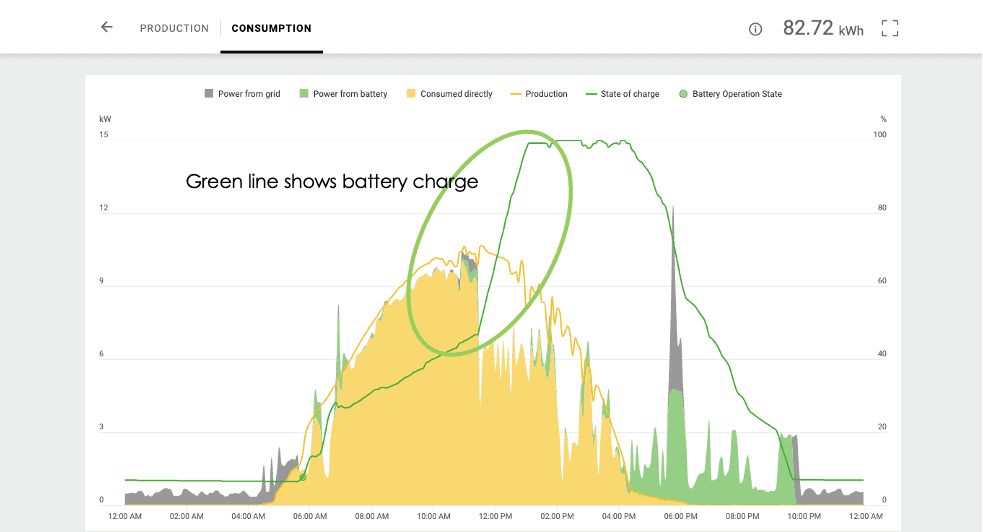
Image above shows the battery charging.
There are slight ebbs and flows in terms of the battery state of charge.
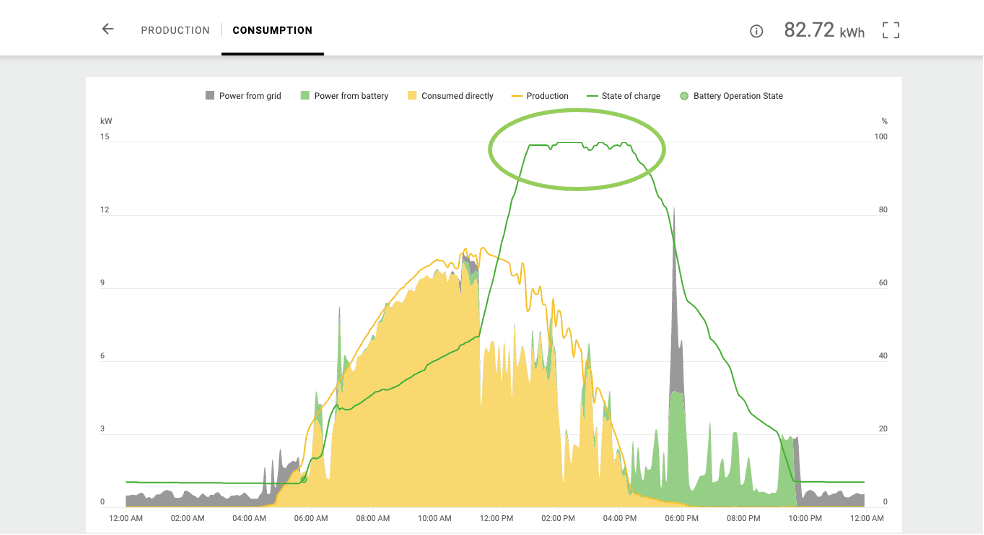
The reason for this would be the consumption demand is slightly above what’s being provided by solar PV. So little bit of a battery can then be consumed, then fill the battery again and just follow that curve all the way through till about 4pm.
PV production is now coming down for the afternoon. And then you can see the evening is now taken over. So everything that’s being consumed in the evening is coming from the battery.
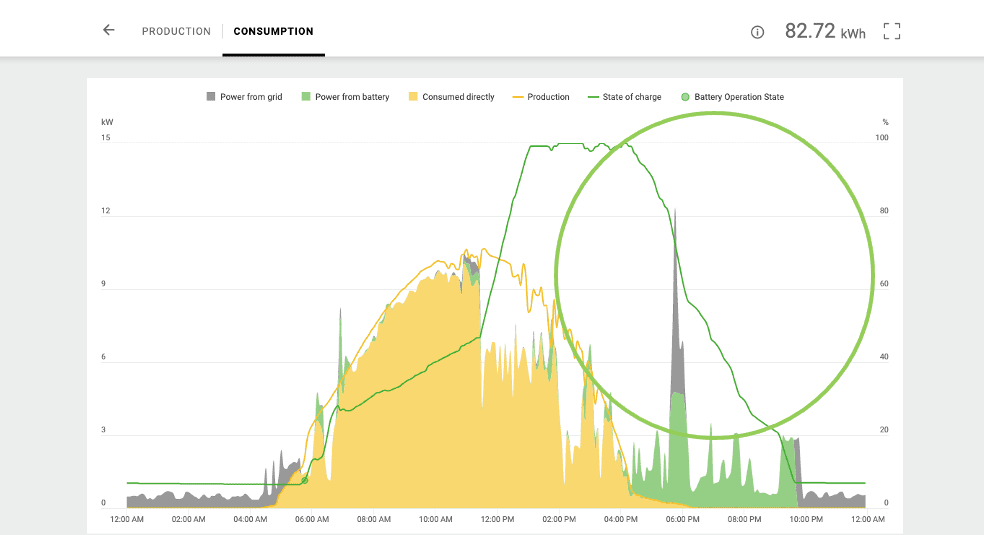
At around 5:45pm There’s a huge spike in terms of what’s being consumed in the home. This spike is approximately 12 kilowatts of power. I’d expect this would be air conditioning, maybe the oven cooktop and some other appliances. You can see the battery just constantly reducing in terms of the state of charge with the home being fully supplied from stored solar energy from the battery.
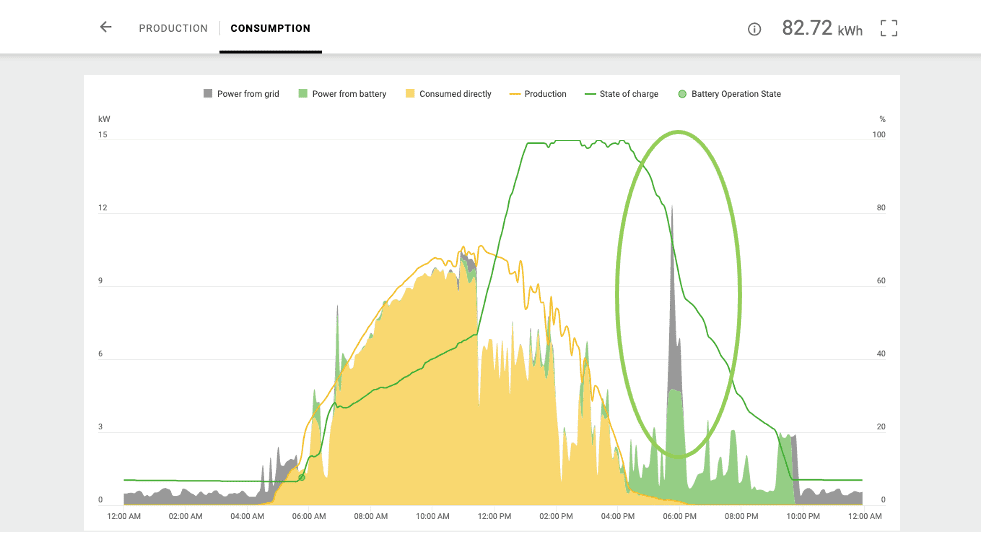
The added benefit of this is the 12kW peak occurred during demand charge hours that typically run from 4pm until 9pm. So, with this power being consumed from the battery rather than from the grid, we’re avoiding that excess demand charge. To give you an idea of this 12kW of power that was drawn at 5:45pm would equate to about $1.50 – $2.00, which would then be multiplied for every day in the billing period. So that would add up to about $180, just for that quarter for whatever was turned on for that short time. So this customer not only has the benefit of solar panels and a battery, they’ve also got the Fronius Watt Pilot, soaking up all of that excess solar energy, bringing up the utilization rate from the system perfectly.
Summary
The Fronius Watt Pilot is an intelligent EV charger that will soak up any excess solar energy that’s available that’s not being consumed in your home or charging your battery. It works all through one piece of hardware that’s also providing your solar monitoring, so there’s no need for additional hardware. This means it also saves cost for additional hardware and saves space in your switchboard which is important as we all add more and more electrical appliances to our homes.
We have been selling Fronius inverters for 12-years and we highly recommended the Fronius Watt Pilot for those who own an EV and want to maximise solar benefit.
Here are some other helpful links:

